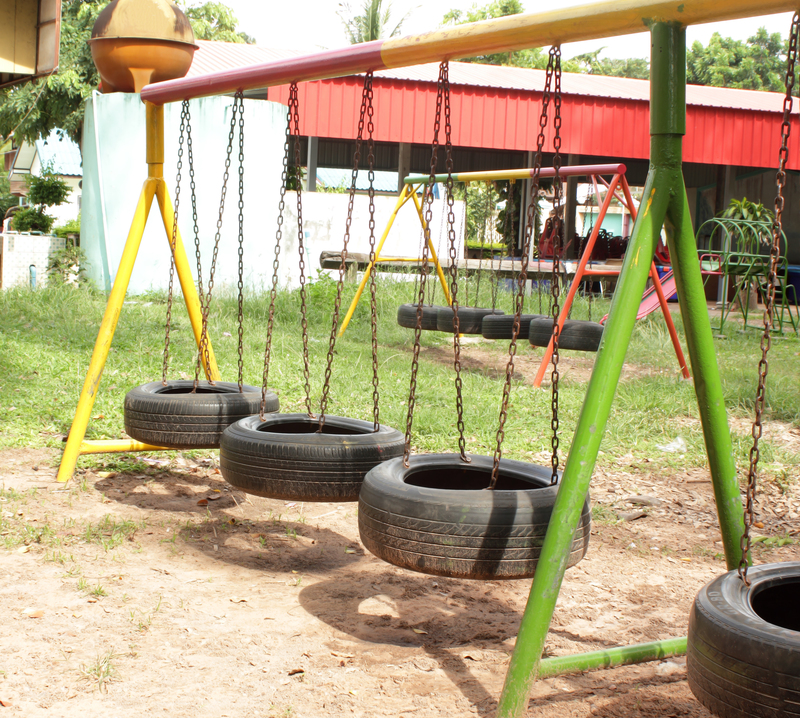Thrifty Hacks for Managing Bulky Waste Item Disposal
Managing the disposal of bulky waste items can be a challenging task for households and businesses alike. From worn-out furniture to broken appliances, these oversized items often require special considerations, time, and sometimes substantial expenses. Fortunately, there are numerous thrifty hacks and smart strategies that make disposing of large waste manageable, cost-effective, and even eco-friendly. In this comprehensive article, we will explore the most effective and affordable solutions for bulky junk disposal while highlighting creative ways to save money and reduce your environmental footprint.
Understanding Bulky Waste: What Is It?
Bulky waste, also called large item waste or bulk refuse, refers to items that are too big or too heavy to fit in regular household trash bins. Common examples include:
- Old sofas, chairs, and mattresses
- Large household appliances (refrigerators, washing machines, dryers)
- Broken furniture, bookcases, and wardrobes
- Carpets and rugs
- Garden equipment (lawnmowers, barbecue grills)
Proper bulky item disposal is crucial for keeping homes, neighborhoods, and the environment clean and safe. Yet, tackling these items doesn't always have to strain your wallet. Let's delve into budget-friendly hacks to dispose of bulky waste efficiently.

Why Is Bulky Waste Disposal Challenging?
Dealing with large waste items poses unique challenges:
- Size and weight: These items can be cumbersome to move and transport.
- Collection regulations: Municipal waste services often require special scheduling or fees for bulk items.
- Environmental concerns: Improper disposal of appliances or electronics can release toxins into the environment.
- Disposal costs: Removal services or landfill fees can add up quickly.
Despite these hurdles, there are several innovative and cost-saving measures you can use for bulky waste removal that are both practical and environmentally friendly.
The Top Thrifty Hacks for Bulky Waste Item Disposal
1. Embrace Upcycling and Creative Reuse
Instead of sending bulky items straight to the dump, consider upcycling or repurposing. Many old furniture pieces can take on new life with a bit of creativity and minimal investment. For example:
- Turn an old door into a quirky table or headboard.
- Refurbish dressers or cabinets with fresh paint and new hardware.
- Transform wooden pallets into outdoor seating or planters.
This not only prevents waste but also adds unique, personalized items to your home. Many online tutorials guide you through simple, budget-friendly DIY projects. The satisfaction of upcycling is matched only by the money you'll save!
2. Host a Curbside Freebie Event
If you live in an area with foot or vehicular traffic, a curbside freebie event (sometimes called "Curb Alert") can be a fantastic way to "dispose" of bulk waste items for free. Place your unwanted items on your curb with a clear sign stating "FREE." Spread the word on neighborhood apps and social media.
- Many people look for free furniture or appliances to fix up.
- Items often disappear within hours!
- Be sure to follow local regulations; some towns restrict curbside giveaways.
It's one of the simplest, no-cost tricks for getting rid of bulky waste items sustainably.
3. Check Local Bulky Waste Collection Services
Most municipalities offer annual or quarterly bulky waste collection days. These are coordinated pickups where residents can dispose of large items without the usual fees. To take advantage of these:
- Review your city or town's waste management calendar online.
- Find the nearest drop-off locations or scheduled pickup dates.
- Group items together to maximize collection quota per household.
Some communities provide extra pickups for a small fee--still cheaper than hiring a private service!
4. Leverage Community Recycling & Donation Centers
Donating usable bulky items is a responsible and thrifty hack. Many charities and thrift shops accept gently-used furniture and appliances. Look for:
- Nonprofit donation centers (e.g., Goodwill, Habitat for Humanity ReStores)
- Local church groups or shelters seeking furnishings
- Community recycling depots for metals, electronics, or tires
Some donation services offer free pickup of your items, saving you transportation costs. As a bonus, your donation might be tax-deductible. Reusing is not just thrifty, but generous.
5. Use Online Marketplaces for Giveaways or Cheap Sales
Platforms such as Facebook Marketplace, Craigslist, Freecycle, or OfferUp are excellent for listing bulky waste items either for free or at a minimal price. This method:
- Makes it easy for interested parties to message you about pickup.
- Helps your items find new homes while reducing landfill waste.
- May provide you with a little cash back in your pocket.
Be sure to upload clear photos, provide exact dimensions, and highlight if the items are heavy or require special handling.
6. Partner with Neighbors for Group Bulk Removal
Large item collection often comes with minimum charges or pickup thresholds. By teaming up with neighbors, you can:
- Share the cost of hiring a junk removal van or dumpster
- Negotiate better rates for group pick-ups
- Reduce per-person disposal expenses significantly
Organizing a neighborhood cleanup day also builds community spirit!
7. DIY Transport to the Landfill or Recycling Center
If you own or can borrow a pickup truck, self-hauling is one of the most affordable ways to get rid of bulky waste items. Many landfills or transfer stations have discounted rates for residents. Before you go:
- Check what materials are accepted and fees involved
- Secure your load properly to avoid fines or accidents
- Wear gloves and take precautions when handling heavy or hazardous materials
Some facilities sort items for recycling, further minimizing what ends up in landfill.
8. Take Advantage of Manufacturer or Retailer Take-Back Programs
More appliance and furniture retailers now offer take-back services for bulky items. When buying a new mattress, sofa, or appliance, ask if the company:
- Collects and recycles your old product upon delivery of the new one
- Offers discounts or incentives for returning used items
- Partners with recycling programs
This is often included in the cost of delivery, making it a savvy option for those upgrading large household items.
9. Rent or Borrow Equipment Tailored for Heavy Lifting
Disposing of oversized items often requires some muscle. To minimize the physical strain and potential injury:
- Rent or borrow a hand truck, dolly, or appliance lift from hardware stores or tool libraries
- Use moving straps for heavier items
- Gather a few friends to help if possible
Having the right equipment makes the job safer and quicker, so you avoid costly mistakes or broken items that may need professional removal.
10. Disassemble Bulky Items to Simplify Disposal
Sometimes the size and shape of an item make disposal difficult. Here's how to hack that:
- Break down furniture into manageable pieces--unscrew legs, remove cushions, separate parts
- Strip appliances of recyclable components--metal, plastics, and electronics
- Use basic hand tools to disassemble and fit items into your vehicle or trash bin
Proper disassembly can save you money on transport and dumping fees--and split materials can often be recycled rather than trashed.
Bulky Appliance Disposal: Eco-Friendly Tips
Large appliances, also known as white goods, such as refrigerators, washing machines, and ovens, require special disposal due to potential environmental hazards. Here are the thriftiest and most eco-conscious ways to manage bulky appliance waste:
- Check for eco-friendly recycling programs: Many regions have dedicated drop-off points or special events for recycling large electronics and appliances.
- Look for scrap value: Old appliances, especially those with metal parts, may have value at scrap yards. Some even pay you for your old fridge or washing machine!
- Donate working appliances: Many organizations accept gently used large appliances if they're still operating.
- Avoid illegal dumping: Abandoning appliances in vacant lots or alleys creates environmental and legal problems.
Cost-Effective Solutions for Businesses and Multi-Family Residences
Commercial properties and apartment complexes face unique challenges when managing bulk refuse removal. They can benefit from the following thrifty hacks:
- Negotiate with haulers: Engage several waste removal companies to compare quotes for large pickups.
- Implement recycling partnerships: Set up agreements with local recyclers to regularly remove electronic or furniture waste.
- Promote re-use among tenants: Offer communal spaces for residents to leave unwanted but usable items for neighbors to take.
- Schedule periodic bulk waste pick-up events: Organize and fund large collection days that encourage participants to clean out bulky items, reducing clutter and illegal dumping.
Bulky Waste Disposal Mistakes to Avoid
When disposing of large household waste, watch out for these common missteps:
- Ignoring local regulations & fines: Dumping outside of designated areas or times can result in substantial penalties.
- Failing to prepare for heavy or hazardous waste: Mishandling large, sharp, or toxic items poses safety dangers and environmental risks.
- Overlooking upcycling or donation: Many bulky items could be valuable for charities or others in need.
- Neglecting cost comparison: Quickly hiring the first removal service may cost more than exploring alternatives.

Frequently Asked Questions
How can I get rid of bulky items without spending much money?
Try donation centers, curb alerts, recycling programs, neighborhood assistance, or selling/giving away items online. Municipal bulk pickup days and DIY transport can also drastically reduce your expenses.
What should I do if an item is too heavy to move?
Disassemble items, recruit help from friends or neighbors, and use proper equipment like dollies. Never attempt to move something that could result in injury.
Are there items that require special disposal?
Yes--electronics, appliances, and hazardous waste need proper handling. Always check local recycling or hazardous material guidelines.
Is illegal dumping a big issue?
Absolutely. Illegal dumping leads to fines, environmental degradation, and community blight. Always follow proper bulky waste disposal protocols.
Conclusion: Making Bulky Waste Item Disposal Affordable and Easy
Thrifty hacks for managing bulky waste item disposal can turn a difficult job into a manageable, even rewarding, process. With options ranging from upcycling to community collections and savvy use of online resources, there's a cost-effective solution for everyone. With a little research and effort, you can dispose of bulky waste items without breaking the bank--and help the environment at the same time.
Take action today--and transform your home, neighborhood, and planet, one bulky item at a time.
- Explore creative reuse before disposal.
- Use community resources and municipal services.
- Don't overlook eco-friendly disposal for large appliances.
- Team up with neighbors to save money.
- Always follow local environmental regulations.
For more in-depth information on thrifty bulk waste management or to find local resources for your next cleanup, check with your city's public works department or visit community forums. Happy decluttering!
